Tchirila
Logging, mining, and oil operations have had considerable environmental consequences that changed the face of the Congolese territory. In response to these issues, national parks are being created to delimit and preserve segments of ecosystems, without really taking into account the established communities. In this regard, how can architecture support the ecological and community-based development of a protected area?
Place : Conkouati-Douli National Park, Republic of the Congo
Surface : 20 m2
Client : WCS
Phase : Phase 1, built
Photos : Marilène Blain-Sabourin

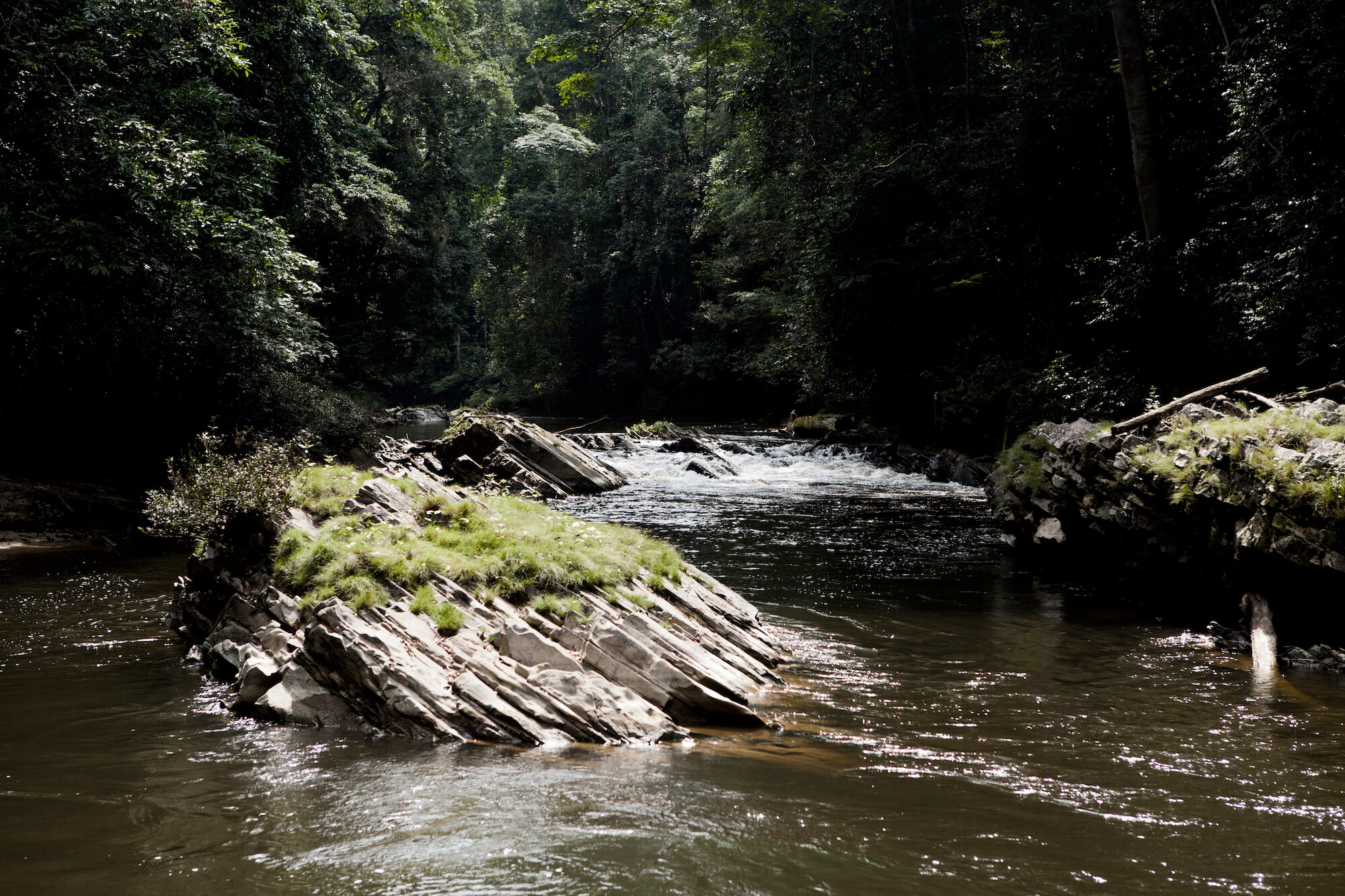



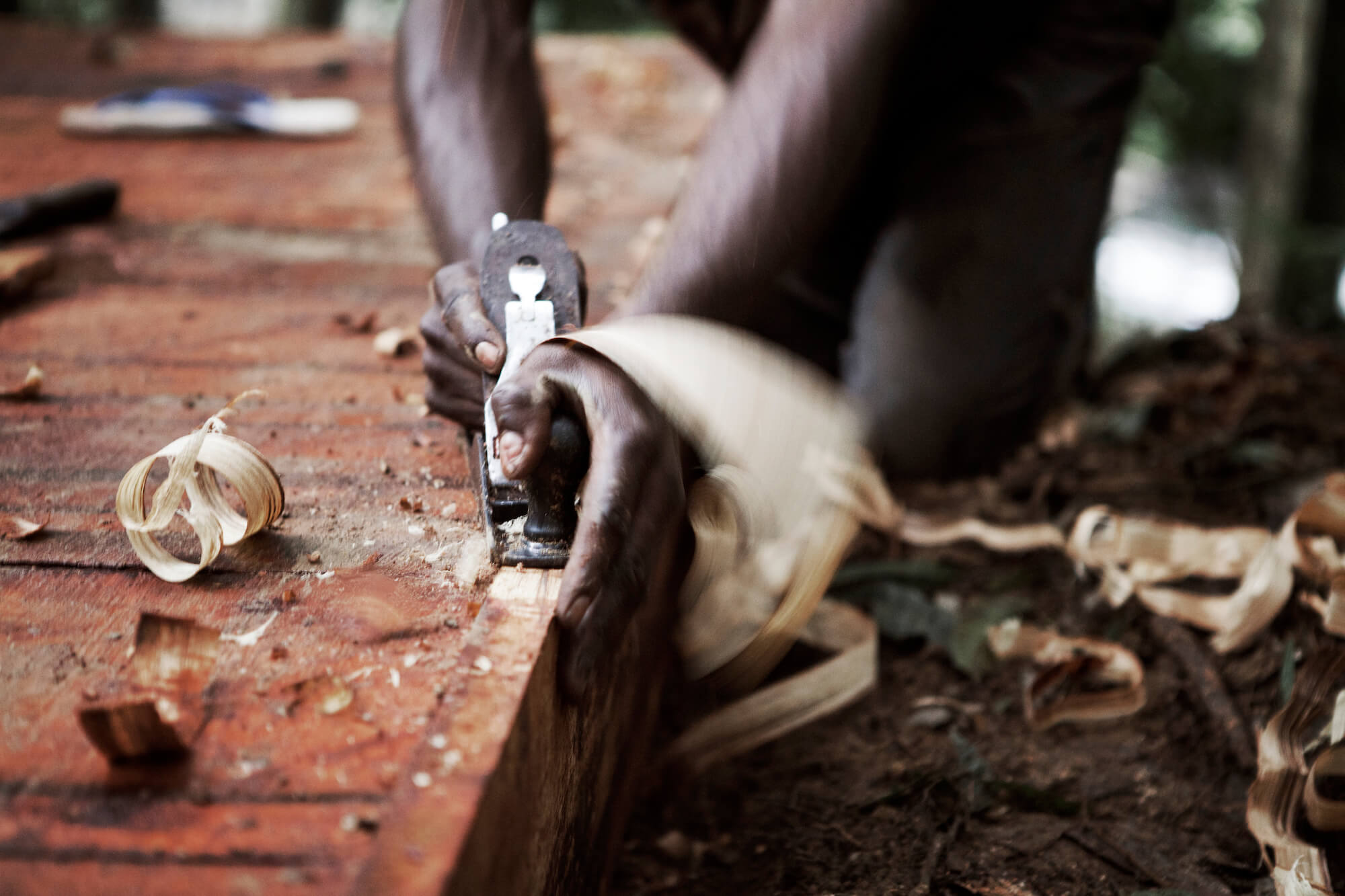
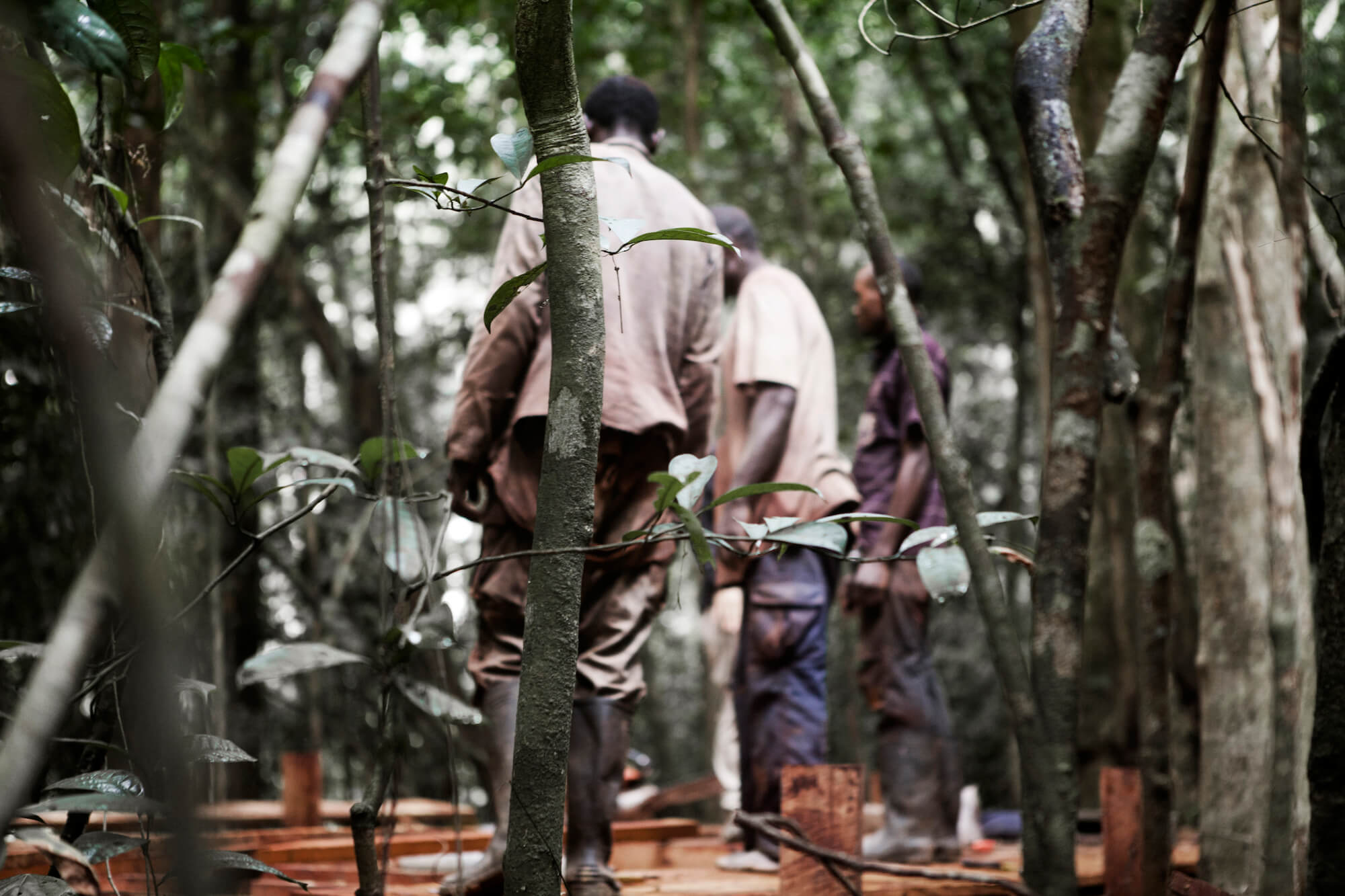
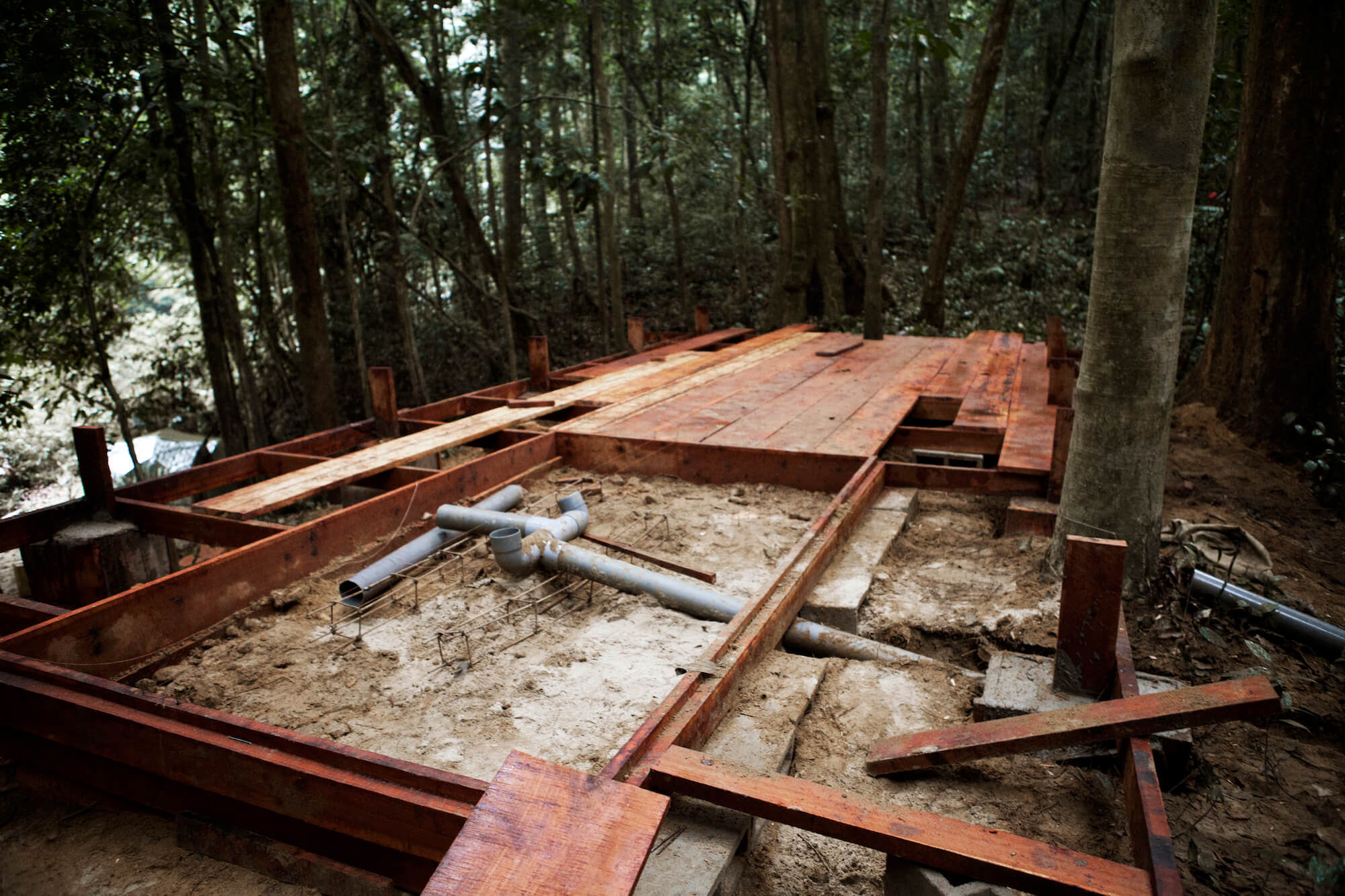

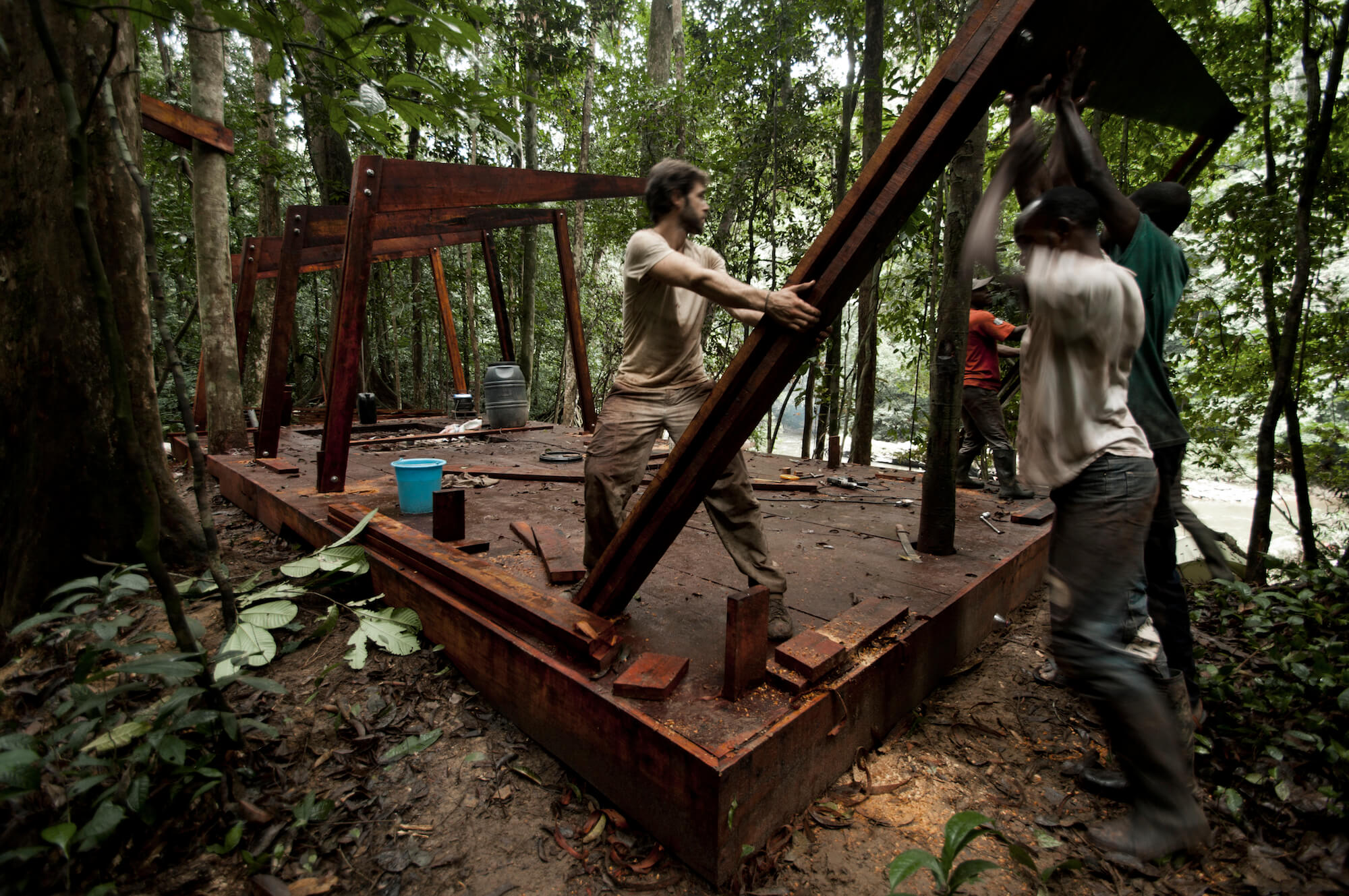

The Congolese Conkouati-Douli National Park is ideal for exploring these questions given its proximity to oil operations and the 7 000 villagers who, upon the creation of the park, lost their right to fish and hunt for conservation reasons.
In partnership with the Congo Basin Coast (CBC) program, the Wildlife Conservation Society (WCS) took the initiative of testing an ecotourism route to assess the park’s tourism potential before diversifying its infrastructure.
Following the prospecting of various zones within the Park, the Tchirila cascades site was chosen to build the installations required for the development of kayaking circuits. This site is located in the fully protected zone, where the dense and mountainous forest remains practically untouched and the fauna is representative of Congolese ecosystems.
The camping site provides 3 riverside terraces as well as a community lodge with showers and a kitchen as well as direct access to the beach. The design of all of the project’s structural components took into account the local materials and the expertise of available labour. Thus, the project encouraged the social economy and guaranteed the transfer of know-how for long-term positive impacts.